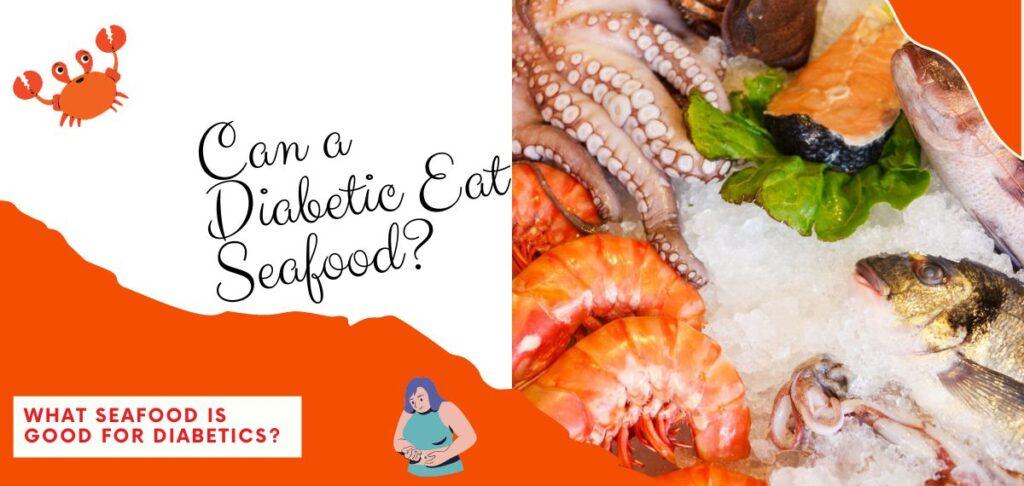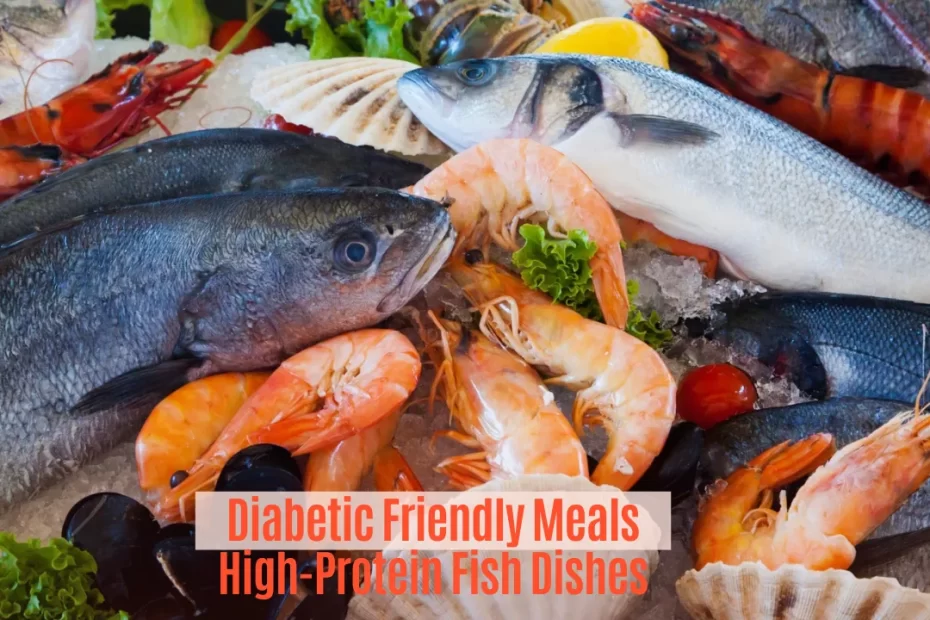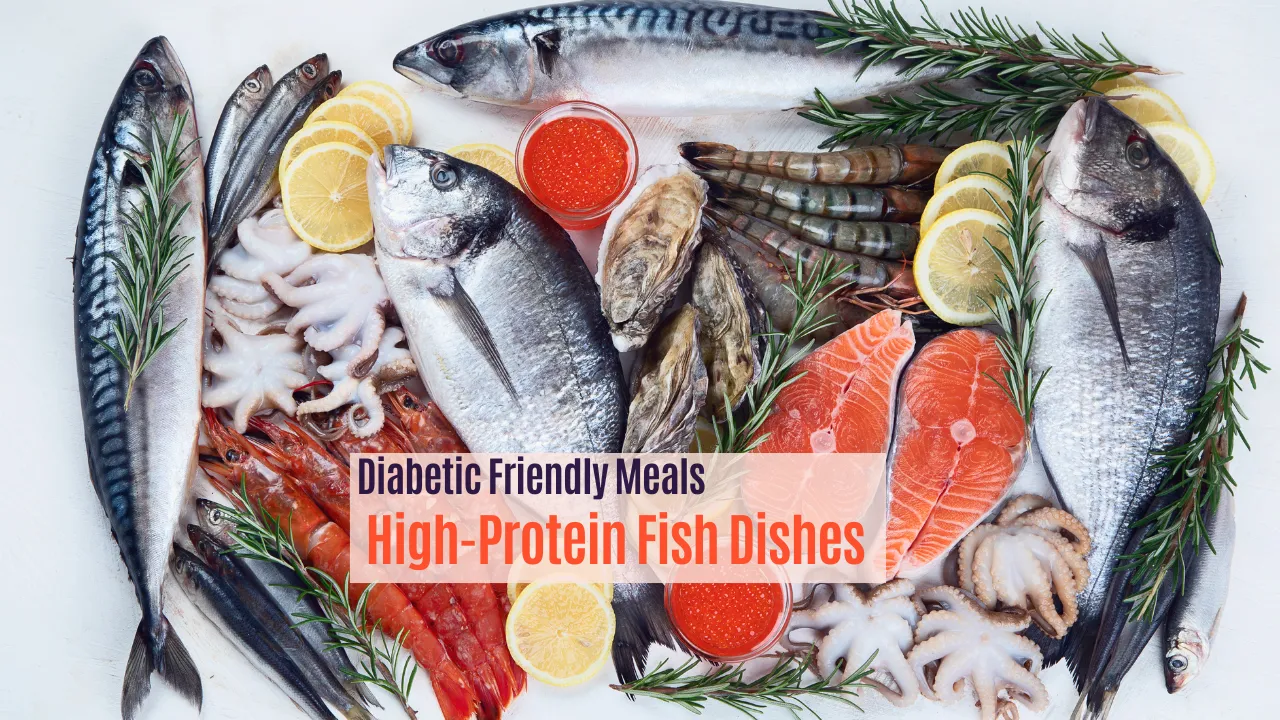What kind of protein should I eat? Is chicken or salmon better (high-protein fish/seafood)?
Protein is essential for muscle growth and repair. The body uses amino acids to build muscles, bones, skin, hair, nails, and other tissues. Proteins come from animal sources such as meat, poultry, seafood, eggs, dairy, beans, nuts, seeds, and soybeans.
Protein is vital for building lean muscle mass and maintaining bone health. Diabetes affects millions of Americans every year. If you or someone you love has diabetes, you might wonder whether seafood is safe to eat.
- Should Diabetics Eat Seafood?
- What Seafood is Good for Diabetics?
- Diabetic Food List - High-Protein Fish
- Low-Carb Meals for Diabetics - High-Protein Fish
- Healthy And Flavorful Options For Diabetic -High-Protein Fish Dishes
- Are Sardines Recommended For Diabetes Patients?
- Are Sardines Safe for Diabetes?
- Are Shrimp Safe for Diabetes?
- Seafood Precautions for Diabetics: What You Need to Know
- Source & Credits:
Diabetes is a condition where blood sugar levels become too high because the body does not produce enough insulin (a hormone) or cannot properly use the insulin it produces. Insulin helps move glucose from the bloodstream into cells, where energy is produced.
Glucose builds up in the bloodstream when the pancreas produces insufficient insulin or the body becomes resistant. This buildup causes serious health problems such as heart disease, stroke, blindness, kidney failure, nerve damage, amputations, and death.
Seafood contains nutrients that are beneficial to diabetics. Some studies show that fish oil supplements can reduce blood sugar levels. However, certain types of seafood also have risks. For example, mercury levels in tuna can pose a risk to pregnant women and children.
Should Diabetics Eat Seafood?
Seafood is a great source of protein, especially high-protein fish, and nutrients, but some types contain high levels of saturated fat and cholesterol.
Which seafood has the lowest amount of these substances? The American Heart Association recommends limiting the consumption of foods containing saturated fats and cholesterol because they increase blood cholesterol levels. Saturated fats come from animal sources such as meat, dairy, eggs, and butter. Cholesterol comes from red meats, poultry, fish, shellfish, and organ meats.
Fish contains omega-3 fatty acids, which lower bad (LDL) cholesterol and raise good (HDL) cholesterol. Fish also provides other essential nutrients, such as vitamin D, calcium, iodine, selenium, zinc, and iron.
Low in trans and saturated fats
Maintaining a low cholesterol level and a healthy heart depends on a diet low in trans and saturated fats. That’s true for most of us, but especially those with diabetes. Thankfully, the fat in your seafood is unsaturated and, therefore, healthy.
A natural source of omega-3
Many of us understand by now that fatty acids such as omega-3s are essential to combating high blood pressure, cholesterol, and heart disease. Seafood is high in omega-3s, helping diabetics better manage their condition.
What Seafood is Good for Diabetics?
Diabetic Food List – High-Protein Fish
For some people, fatty fish is the best and healthiest food on the planet. Seafood is a rich source of omega-3, high-protein fish, fatty acids, etc., and all offer benefits for different diseases, with diabetes being one primary beneficiary.

Low-Carb Meals for Diabetics – High-Protein Fish
A low-carb diet can be a helpful tool for managing diabetes by helping to regulate blood sugar levels. Here are some examples of low-carb meal ideas:
| Meal | Description |
|---|---|
| Breakfast |
|
| Lunch |
|
| Dinner |
|
| Snacks |
|
Important Considerations:
- Carbohydrate Counting: Track your daily carbohydrate intake to ensure you stay within your doctor’s recommended limits.
- Protein and Healthy Fats: Incorporate plenty of protein and healthy fats into your meals to help manage blood sugar levels.
- Fiber: Aim for a fiber-rich diet to help regulate blood sugar and promote satiety.
- Portion Control: Be mindful of portion sizes to avoid overeating.
Remember, a low-carb diet should be a sustainable lifestyle change, not a temporary fix.
Healthy And Flavorful Options For Diabetic -High-Protein Fish Dishes
Is Salmon Good for Diabetics?
Salmon is a top source of omega-3, the healthiest fat that reduces inflammation in blood cells and helps manage cholesterol levels. Omega-3 fatty acids have health benefits for keeping your heart healthy, improving brain function, and maintaining good eyesight.
Salmon filets, salmon patties, and salmon in sushi are tasty dishes you may eat without realizing just how good they are for diabetes and insulin sensitivity.
Salmon – both canned and fresh – is a rich source of healthy omega-3 fats, protein, and carbohydrates. This means that, by default, salmon aids in weight loss and keeps you feeling fuller for longer. There’s also no risk of your blood sugar rising with every salmon meal you take.
Most significantly, salmon will manage blood glucose levels that can improve your body’s ability to respond to insulin. You can cook it in various styles, including broiling, baking, etc.
Shrimp – High-Protein Fish:
Many people may not like shrimp for various reasons, one of which is that they contain high levels of unwanted cholesterol.
Nonetheless, you can have a certain quantity of shrimp to help manage diabetes. You may use shrimp in the form of ginger-shrimp skewers for healthy results. It does not contain many calories.
Shrimp is a high-protein food that stabilizes blood sugar and helps with satiety (feeling full). Carbohydrate energy burns quickly, but proteins and fats give a stable energy level and sail you through until your next meal.
High-Protein Fish: Shellfish -Crab - Lobster
Consuming more fish and shellfish (crabs and lobsters) is good for diabetic patients. However, it’s difficult to remove the meat from the shells, which makes them less known. Shellfish decreases the risk of diabetes, obesity, and heart disease and promotes healthy cholesterol levels.
Crabs are a good source of chromium, which helps insulin metabolize sugar and thus lowers high blood glucose levels. Due to the presence of selenium in crabs, they may also have an anti-cancer effect.
Lobsters are suitable for type 2 Diabetics as they constitute a significant source of omega-3 fatty acids.
Are Sardines Recommended For Diabetes Patients?
Are Sardines Safe for Diabetes?
Yes, sardines are an excellent choice for people with diabetes. These small, oily fish are low in carbohydrates, making them ideal for stabilizing blood sugar. They’re also packed with protein, which helps reduce post-meal glucose spikes and promotes satiety, which is key for weight management in diabetes care.
One of sardines’ most significant benefits is their richness in omega-3 fatty acids, which are known to lower inflammation and improve heart health. This is critical since people with diabetes are at higher risk for cardiovascular disease. Sardines are also a good source of vitamin D, calcium, and B12, which support overall metabolic and bone health.
Another bonus: Sardines are low in mercury because they’re small and sit low on the food chain. That makes them a safer option for frequent consumption compared to larger fish.
Caution: Choose sardines packed in water rather than oil to avoid added calories, and check labels for sodium levels, especially in canned versions.
Are Shrimp Safe for Diabetes?
Shrimp can be safely enjoyed in moderation by people with diabetes, thanks to their high protein content and virtually zero carbohydrates. This means they won’t spike blood sugar levels, making them a smart protein option.
Shrimp are also low in saturated fat and high in selenium, vitamin B12, and iodine, which support metabolic and thyroid health. They’re quick to cook, versatile, and easy to add to diabetic-friendly dishes like grilled salads or stir-fries.
However, shrimp are relatively high in dietary cholesterol. While dietary cholesterol doesn’t affect everyone equally, those with both diabetes and heart disease should be cautious and consult with a healthcare provider.
Conversely, shrimp are low in mercury, making them a safer seafood option. Avoid breaded, fried, or heavily sauced preparations, which can add hidden sugars or unhealthy fats.
Seafood Precautions for Diabetics: What You Need to Know
Seafood is often praised as a wise choice for people with diabetes. It’s rich in protein, low in carbs, and loaded with healthy omega-3 fatty acids that support heart and brain health. However, not all seafood is created equal, and there are a few essential precautions to remember for people managing blood sugar.
1. Watch Out for Mercury:
Large fish like swordfish, king mackerel, and some types of tuna contain high levels of mercury. While occasional consumption may be fine, frequent intake could impact kidney function—something diabetics already need to monitor closely.
2. Say No to Breaded and Fried:
Fried shrimp or breaded fish sticks may taste great, but are usually high in refined carbs and unhealthy fats. These can spike blood sugar and contribute to insulin resistance. Choose grilled, steamed, or baked options instead.
3. Limit Processed Seafood:
Pre-packaged seafood items like imitation crab meat and canned fish in sauces may contain added sugars, sodium, or preservatives. Always read nutrition labels and opt for water-packed, unsweetened versions.
4. Be Mindful of Cholesterol:
Some shellfish, like shrimp and lobster, are high in cholesterol. While recent research has eased concerns for most people, those with both diabetes and heart disease should consult their doctor or dietitian about appropriate portions.
5. Balance Your Plate:
Pair seafood with fiber-rich veggies, whole grains, and healthy fats. This will help slow down digestion and keep your blood sugar stable.
Bottom Line:
Seafood can be part of a diabetic-friendly diet, but quality, preparation, and portion size matter. Make smart swaps, stay mindful of hidden sugars or sodium, and aim for variety to keep your meals healthy and enjoyable.


Whether you choose Paleo, Mediterranean, or flexitarian, the key is to prioritize whole, unprocessed foods
Cool. healthy fats in sardines can help regulate glucose absorption, keeping blood sugar levels in check. Thank you.
This yoga program has been a game-changer for my arthritis management. I’m now living pain-free and enjoying life to the fullest!. I’m 52
There are so many High-Protein Fishes, most of them are very delicious
Thank you for your comment on diabetes management with healthy food choices like fish. You’ve highlighted an important aspect of a well-rounded approach to managing diabetes through nutrition.
Thanks
Who knew that shrimp and prawns could be so beneficial for individuals with diabetes? Their high omega-3 fatty acid content can help reduce inflammation and improve heart health, which is crucial for those managing diabetes. Keep up the great work in providing valuable dietary tips!
Adding fish rich in omega-3, like salmon or sardines, to your diet can be beneficial for managing Type 2 diabetes!
Dizziness is one of the symptoms you may experience if you have diabetes. It could be caused by high blood glucose levels.
The Diabetes-Friendly Diet: The Role of Oily Fish. Your point of view caught my eye and was very interesting. Thanks.